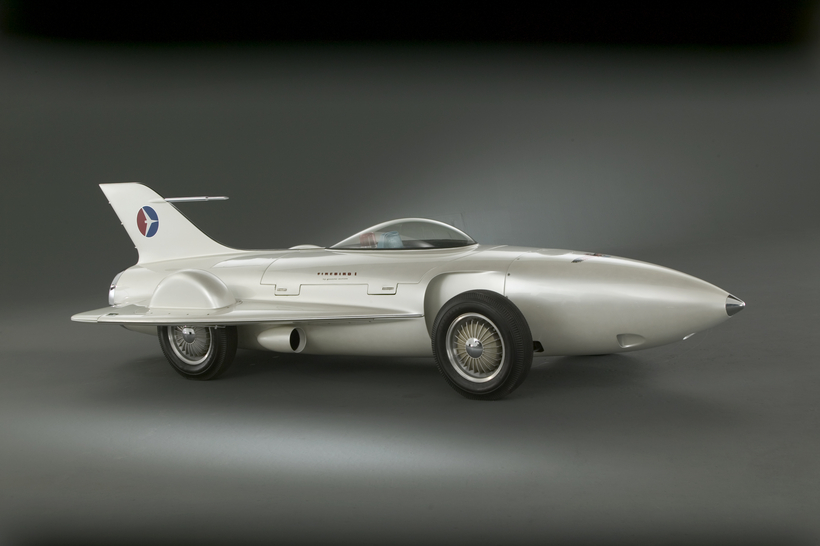What aspect of contemporary life haven’t cars impacted? Industrial design and manufacturing. Fine art and popular culture. Mating and work habits. The ways we define our present and grapple with the future. The very pace and rootlessness of life as it has been lived by the three or four most mobile generations in human history. There are tire tracks everywhere.
All those miles—all those fumes—are the subject of the appropriately far-ranging exhibition “Cars: Accelerating the Modern World,” a suburban sprawl of a show at the Victoria and Albert Museum, in London. “It is not an exaggeration to say that there is no other object that has had such an immense impact on the past century,” write the co-curators, Brendan Cormier and Lizzie Bisley. “This extends from our experience of speed to the ways in which we make and buy products, and the very landscapes that we inhabit.... The car offers a unique case study for the power of objects and design decisions to change the world.”
The show includes actual vehicles, of course, 15 in all, among them the very first production car, the Benz Patent-Motorwagon No. 3, designed in the mid-1880s by Karl Benz. It’s a three-wheeler that looks less like the future of transportation than a jerry-rigged yet somehow graceful marriage between a horse-drawn buggy and an old-timey bicycle. The advances in technology—and marketing—that took place over the next six and a half decades are made stunningly visible in the Firebird 1 concept car, designed in 1953 by Harley Earl for General Motors. More fighter jet than sedan, the Firebird 1 features a cockpit, a pointed “nose cone,” and a single F-4-worthy tail fin. Zoooom! Vroom! Blam! Had it gone into production, America’s freeways would have looked like the skies over Moscow in the fever dreams of the Pentagon’s most committed Cold Warriors.
A suburban sprawl of a show that includes actual vehicles, among them the very first production car.
Less expected objects better illuminate the car’s legacy as an influencer with horsepower. The 1940s Streamliner meat slicer, designed by the Americans Egmont Arens and Theodore C. Brookhart, isn’t so much a household appliance as it is an exquisite futurist sculpture that can also cut ham—a neat demonstration of the cross-pollination between car design, product design, and high art. A 1962 illustration from an Italian newspaper shows men and women of the future commuting in single-person four-wheel pods—a vision that has come true spiritually, at least, given the car’s cherished role as both a symbol and enabler of individual freedom. Or loneliness, if you’re in a darker mood.

Speaking of which, you can’t think anything about cars in the 21st century and not confront the havoc they’re wreaking on the planet. The V&A exhibition includes a retrospectively stomach-churning magazine ad, from 1962, for the Humble Oil and Refining Company (which rebranded itself as Exxon a decade later). The headline boasts, EACH DAY HUMBLE SUPPLIES ENOUGH ENERGY TO MELT 7 MILLION TONS OF GLACIER! The ad copy notes reassuringly that a pictured Alaskan glacier “has remained unmelted for centuries. Yet, the petroleum energy Humble supplies—if converted into heat—could melt it at the rate of 80 tons each second!”
Alas, that is one bit of car-related fancy that did come true, literally, give or take a few million tons of ice. Vroooom! Zoom! Glub glub glub. —Bruce Handy

